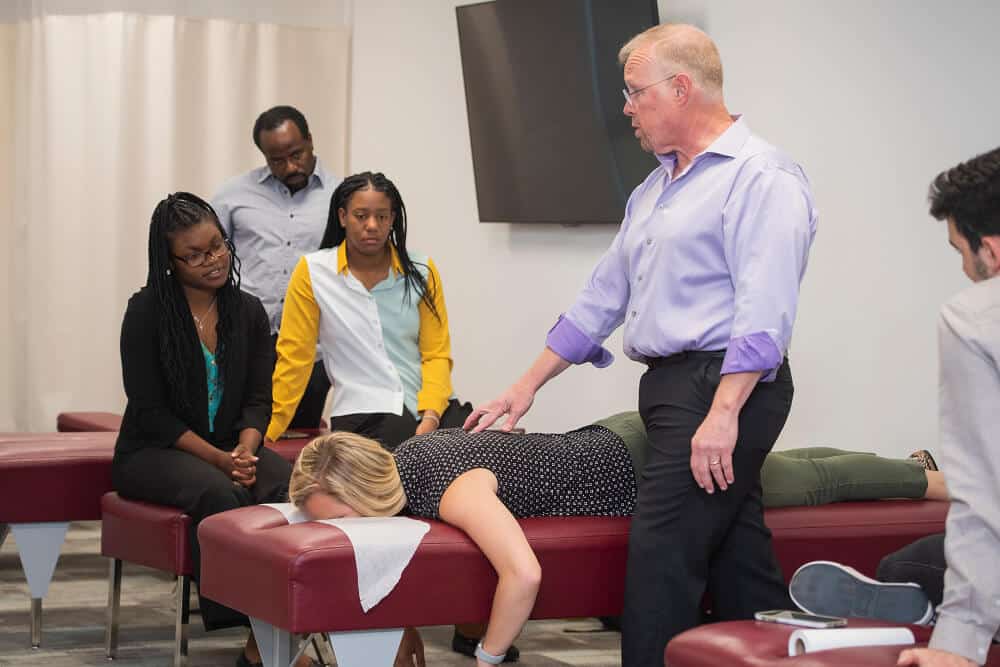What to Expect from the Doctor of Chiropractic Program
Thinking about becoming a Doctor of Chiropractic? Here’s what to expect from the academic program at Sherman College of Chiropractic.
A Rigorous but Rewarding Journey
The Doctor of Chiropractic program is known for being rigorous and fast-paced — some even describe it as “drinking water from a fire hydrant.” Like any doctoral program, it takes hard work, dedication, and a true passion for helping others. Success comes from strong time management, discipline, and determination.
Becoming a chiropractor isn’t easy, but nothing worthwhile ever is! As admissions representatives, our goal is to help prospective students understand exactly what it takes to reach their goals and thrive in this rewarding profession.
Program Basics
Sherman College enrolls new students four times a year — winter, spring, summer, and fall. The program runs 14 quarters, or about 3.5 years of year-round study.
You’ll progress through the program with the same group of classmates from start to finish, creating strong bonds and a sense of community.
Unlike undergraduate programs, students don’t choose their classes or professors. Each quarter has a set schedule, although larger classes may be split into two or three groups to keep our student-to-faculty ratio low.
Students enjoy one-week breaks in the spring and fall, and three-week breaks in the summer and winter.
Frequently Asked Questions
Q: What is the average class size?
A: Class size varies by quarter. Fall tends to be the largest term — for example, fall 2020 had 54 students — while spring is usually the smallest, around 20 students. Regardless of size, we always maintain a low student-to-faculty ratio to support every learner.
Q: How many hours per week are spent in class?
A: On average, students are on campus Monday–Friday, 8 a.m.–4 p.m., with a two-hour lunch break. Some days include additional one- or two-hour breaks, depending on your schedule that quarter.
Q: What’s the latest class offered?
A: Typically, the latest class ends around 7 p.m. during your second quarter.
Q: How do the quarters differ?
A: Each quarter introduces new classes that build on what you’ve already learned. Early quarters emphasize foundational sciences and philosophy, while later quarters focus on technique, clinical training, and electives. You’ll gain hands-on experience starting in your very first quarter.
Q: How is the program structured?
A: The curriculum is designed to prepare you for the national board exams.
- Quarters 1–6: Foundational sciences, technique, philosophy, and palpation — leading up to Part I Boards around Quarter 7.
- Quarters 7–10: Transition to clinical courses and begin seeing patients under supervision.
- Quarters 11–14: Increased clinic time and advanced practical experience.
In your final quarter, you can take the Practice Management Observation Elective (PMOE), shadowing a practicing chiropractor in the field.
Q: How many electives are required?
A: Students complete 55 elective hours in areas such as technique, radiology, research, diagnosis, and clinical care.
Q: What are exams like?
A: Exams mirror the national board format and may include practical assessments, multiple-choice, short answer, and fill-in-the-blank questions.
Q: How available are instructors outside class?
A: Sherman College maintains an open-door policy. Most faculty are available for meetings when in their offices, and many offer appointments to fit student schedules.
Final Thoughts
We hope this overview answers some of your questions and gives you a clearer picture of what to expect at Sherman College.
To view our latest curriculum guide, or to learn more about admissions, please email our admissions team — we’re here to help every step of the way.

